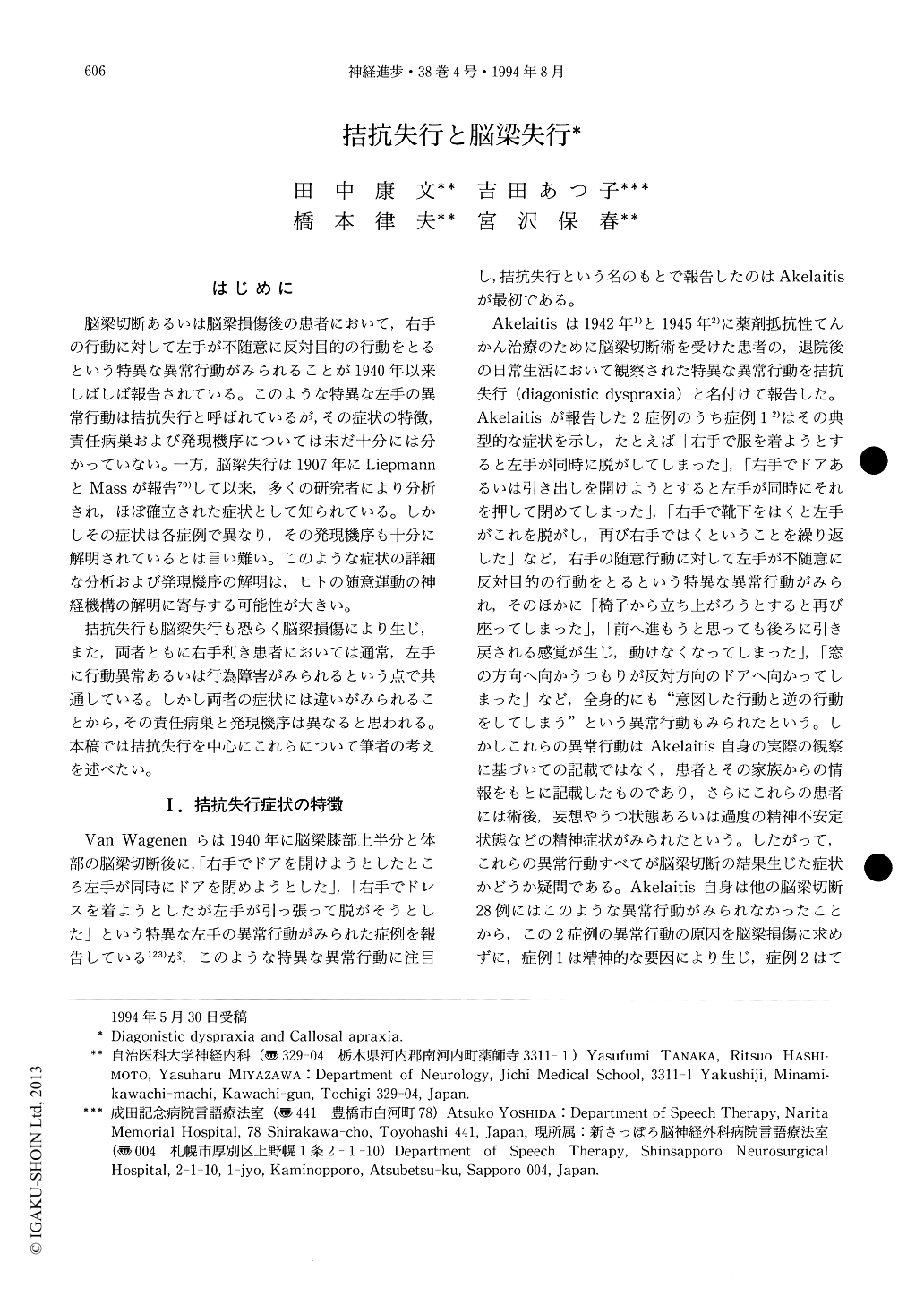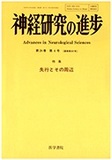Japanese
English
- 有料閲覧
- Abstract 文献概要
- 1ページ目 Look Inside
はじめに
脳梁切断あるいは脳梁損傷後の患者において,右手の行動に対して左手が不随意に反対目的の行動をとるという特異な異常行動がみられることが1940年以来しばしば報告されている。このような特異な左手の異常行動は拮抗失行と呼ばれているが,その症状の特徴,責任病巣および発現機序については未だ十分には分かっていない。一方,脳梁失行は1907年にLiepmannとMassが報告79)して以来,多くの研究者により分析され,ほぼ確立された症状として知られている。しかしその症状は各症例で異なり,その発現機序も十分に解明されているとは言い難い。このような症状の詳細な分析および発現機序の解明は,ヒトの随意運動の神経機構の解明に寄与する可能性が大きい。
拮抗失行も脳梁失行も恐らく脳梁損傷により生じ,また,両者ともに右手利き患者においては通常,左手に行動異常あるいは行為障害がみられるという点で共通している。しかし両者の症状には違いがみられることから,その責任病巣と発現機序は異なると思われる。本稿では拮抗失行を中心にこれらについて筆者の考えを述べたい。
We discussed the difference in symptomatologies and the site of a responsible lesion between diagonis-tic dyspraxia and callosal apraxia.
From our experience and a review of the literature, diagonistic dyspraxia could be better defined as the abnormal motor behavior of the left hand triggered by voluntary movements of the right hand or even by mere intention of the movements. Callosal apraxia, on the other hand, is characterized by amovement disorder such as amorphous or parapraxic movements or perseveration confined to the left hand and induced by verbal commands.

Copyright © 1994, Igaku-Shoin Ltd. All rights reserved.


